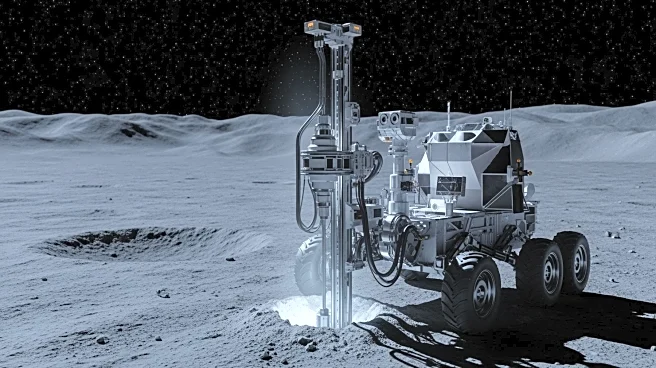What's Happening?
NASA's CLCP dataset, derived from 40 years of Landsat observations, provides comprehensive data on carbon parameters for 24,366 lakes in China. This dataset includes measurements of dissolved organic carbon (DOC),
particulate organic carbon (POC), and dissolved inorganic carbon (DIC), which are crucial for understanding carbon cycle mechanisms and assessing carbon sequestration efficiency. The dataset is particularly valuable for ecologically sensitive regions like the Qinghai-Tibet Plateau, where it aids in identifying carbon sinks and evaluating the carbon burial rate. The data spans from 1984 to 2023 and integrates spatial information of carbon storage, offering a robust foundation for ecological and environmental research.
Why It's Important?
The CLCP dataset is significant for global environmental research, particularly in the context of climate change and carbon management. By providing detailed carbon parameter data, it enables scientists to better understand the carbon cycle and its impact on climate regulation. This can lead to improved strategies for carbon sequestration, which is essential for mitigating climate change effects. The dataset's application in regions with minimal human impact, like the Qinghai-Tibet Plateau, offers insights into natural carbon processes, which can inform conservation efforts and policy-making. Additionally, the dataset supports the development of remote sensing algorithms, enhancing the precision of environmental monitoring.
What's Next?
Future research will likely focus on applying the CLCP dataset to other regions and integrating it with global climate models to predict carbon cycle changes. Scientists may also explore the dataset's potential in developing new carbon sequestration technologies and strategies. As the dataset continues to be used, it could influence policy decisions regarding environmental protection and climate change mitigation. Collaboration between international research institutions may expand the dataset's application, fostering a more comprehensive understanding of global carbon dynamics.
Beyond the Headlines
The CLCP dataset's long-term data collection offers a unique opportunity to study historical changes in carbon dynamics, providing insights into how natural and anthropogenic factors have influenced carbon storage over decades. This can lead to a deeper understanding of ecological resilience and adaptation in response to environmental changes. The dataset also highlights the importance of satellite technology in environmental research, showcasing how remote sensing can bridge gaps in data collection and analysis.












